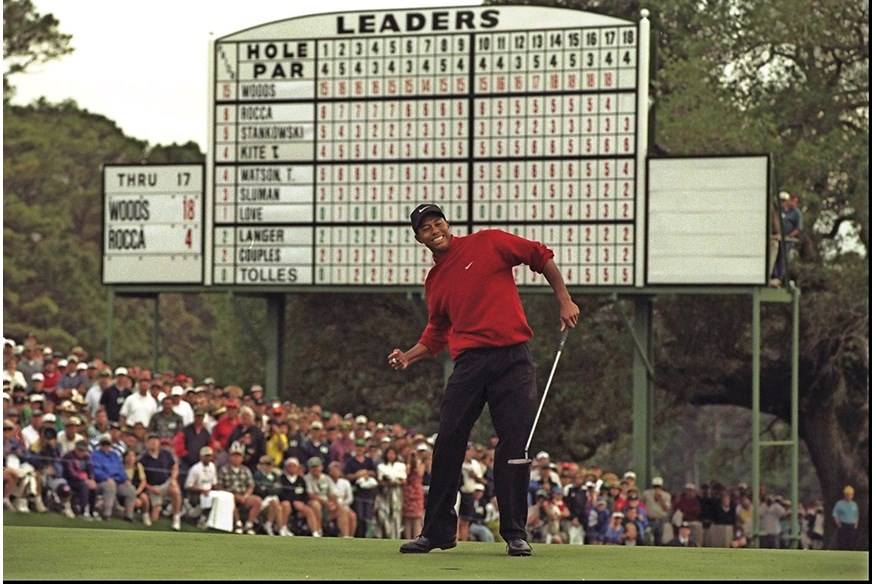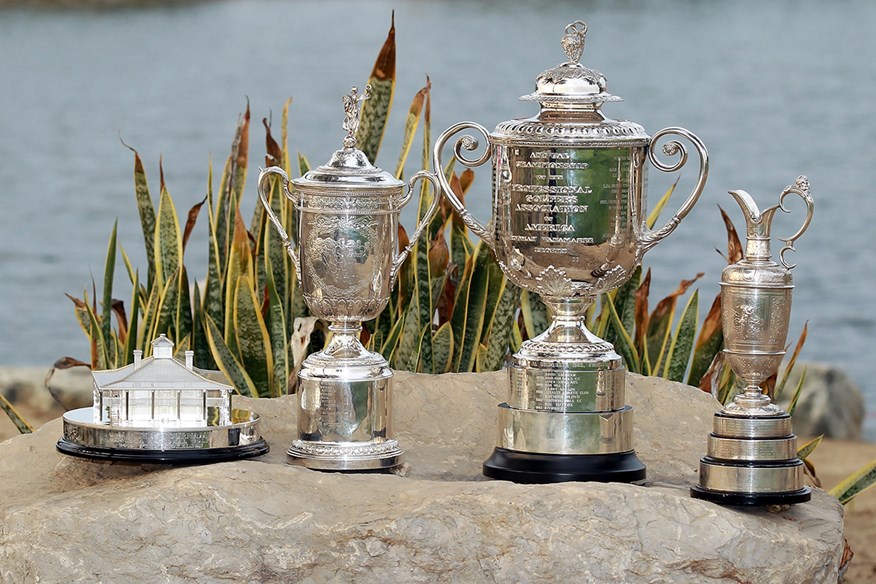Drive for show, putt for… immortality? Why it’s time for the majors to get rid of prize money
Last updated:
Prize money in golf has reached heinous levels with $21.5m up for grabs at the 2025 US Open. Now, writes Rob Jerram, the majors must get rid of it and allow everyone to focus on what truly matters in Grand Slams.
You know the routine. A major wraps up, the newly-crowned champion hoists the trophy, and social media lights up with headlines: “How this golfer made history!” “What’s in the winner’s bag?” “Full prize money breakdown as champ wins millions!” It’s that last one that always gets me. Why do the majors have prize money?
As the editor of this website, I’m part of the problem. We publish those breakdowns because our readers devour them. Do I like it? No. But clicks pay the bills. Still, some weeks shouldn’t be about bills. They should be about legacy.
This isn’t jealousy. Pro golfers have worked their entire lives to reach this level. They attract fans, viewers, and sponsors. They deserve to earn a good living. But there’s a vast difference between a healthy living and the obscene amounts now being thrown around in professional golf.
In regular events, I’ve come to terms with it. For every Scottie, Rory, or Bryson, there are grinders scraping by – sharing rooms, cheap flights, hoping one big week changes their life. For them, the checks matter. I get that. And when one of those players breaks through, I enjoy knowing it’s their life-changing moment.
But Grand Slam events shouldn’t be about money. The relentless “keeping up with the Joneses” among the majors is depressing – except these Joneses aren’t your neighbors with a perfect lawn and new SUV. They’re oil-rich billionaires with pockets far deeper than the wells from which they make their money.
Where does it stop? Every major week, I fantasize about updating the prize money article with: “The majors do not offer prize money.” Why can’t that be real?
Maybe eliminating it entirely is far-fetched. Prize money’s always been part of the game. When the Masters began, Clifford Roberts and Bobby Jones offered $5,000 – a huge sum at the time – to lure players to a new event. Just like the PGA Tour and LIV today, cash was bait. But the majors don’t need bait anymore.

Golf’s four biggest events are about history. About following in the footsteps of legends. When Rory was a kid holing six-foot putts on an empty green in Holywood, he wasn’t dreaming about winning a check – he was imagining holding the Claret Jug. When he broke down in tears and thumped the ground at Augusta, it wasn’t over $4.2 million. It was about completing a lifelong dream.
Do we measure Tiger by the money he made – or his 15 majors? Do we think less of Jack Nicklaus because his total major winnings – $621,730 – are less than Russell Henley made for a T7 at 2024’s US Open? Adjusted for inflation, Nicklaus’ major earnings total $3.6 million – still less than Rory’s Augusta haul in April.
When Horton Smith won the first Masters in 1934, he earned $1,500 – worth $36,000 today. Rory earned $4.2 million this year. Why did the prize ever need to balloon so much?
When the R&A increased The Open’s purse by a meagre $500k in 2024, I read praise for them “getting it right”. But it still rose to $17 million, with Xander Schauffele earning $3.1 million. Praising that as restraint is absurd. Real restraint would have been pegging the winner’s share to something like the £10 given out in 1863 – around £1,400 today.
Of course, giving out £1,400 in a field of 156 players at a tournament that now has huge global appeal is unrealistic. But at Troon last year, Darrell Fitchardt finished 80th, last of the players to make the cut, and banked $38,275. It’s not quite LIV levels, where last place earns you $125k, but it’s still utterly excessive.

Ironically, despite the increasing prize pots, the R&A seemingly agrees.
Speaking at the 2024 Open, then chief executive Martin Slumbers said they remained “concerned about the impact substantial increases in men’s professional prize money are having on the perception of the sport and its long-term financial sustainability.” Slumbers said the organization “are determined to act with the interests of the global game in mind” to ensure golf is still thriving in 50 years.
That brings me to a proposal.
Major Proposal, Modest Payments:
At all four majors:
- Guarantee every competitor – yes, even amateurs – $10,000 to cover expenses. That’s $6,000 more than the current payout for a missed cut. Currently, amateurs can’t earn a dime, yet many still delay turning pro just to keep their place in these coveted events. They’re already choosing history over money – let’s not make them pay for it.
- Those who make the cut get another $10,000. Sure, for most it’s pocket change, but it means everyone who sticks around leaves $20,000 better off. Who among us wouldn’t take that for a week’s work?
- The winner gets $1 million, but it must go to a charity of their choice. Their own foundation? Fine. But it has to serve a greater good.
- Adjust payouts annually for inflation – real inflation, not some arbitrary jump like $500K that feels plucked from the sky.
Using this structure, the 2025 Masters (with 95 starters and 53 making the cut) would have paid out just $2.48 million – a $17.5 million saving. For the recent PGA Championship (156 players, 74 making the cut), the fund would have been $3.3 million, down $15.7 million. At the US Open (156 players, 67 making the cut), it would have been $3.23 million – saving $18.27 million. And at last year’s Open (157 players, 80 making the cut), the payout would have been $3.37 million – saving $13.63 million.
Total for all four: $12.38 million, down from $77.5 million. That’s a $65 million saving and $4.62m less overall than even the lowest of the current prize funds.
How the majors’ prize funds have changed
THE MASTERS
2025 prize fund
Total amount: $20,000,000
Winner’s share: $4,200,000
2000 prize fund
Total amount: $4,600,000
Winner’s share: $828,000
Inaugural prize fund (1934)
Total amount: $5,000
Winner’s share: $1,500
PGA CHAMPIONSHIP
2025 prize fund
Total amount: $19m
Winner’s share: $3.42m
2000 prize fund
Total amount: $5,000,000
Winner’s share: $900,000
Inaugural prize fund (1916)
Total amount: $2,580
Winner’s share: $500
US OPEN
2025 prize fund
Total amount: $21,500,000
Winner’s share: $4,300,000
2000 prize fund
Total amount: $4,500,000
Winner’s share: $800,000
First prize fund (1895)
Total amount: $335
Winner’s share: $150
THE OPEN
2025 prize fund
Total amount: $17,000,000
Winner’s share: $3,100,000
2000 prize fund
Total amount: $2,750,000
Winner’s share: $500,000
First prize fund (1863)
Total amount: £10
Winner’s share: £1.25 (prize fund was split equally between the eight professionals in the 14-man field)
Imagine what the governing bodies could do with that money. Invest in municipal courses. Fund grassroots golf. Support struggling clubs. Develop youth programs. How many future champions are being lost because their local course closed?
Meanwhile, back at the majors, we hear broadcasters say, “He’ll want to make this, or he’ll lose $300k.” Every time, I think: who cares? It’s not relatable. I’m more interested in whether a missed putt costs them a spot in next year’s field, damages their Ryder Cup hopes, or even ends hopes for my each-way bet.
And yes, I’ve heard the argument: slashing payouts hurts lesser-known players the most. But those players didn’t pick up a golf club because they wanted to make millions. They did it because they’d seen Jack, Tiger or Rory winning majors. A T20 finish won’t make you famous – winning will.

Reduced prize money won’t close the door to wealth. One good finish opens doors: endorsements, tour exemptions, sponsor invites. That’s how players build careers.
Even as someone with minimal savings, I’d rather win a major for no money than earn $200,000 for finishing 20th. Because that’s what people remember.
The idea that the majors need to throw cash around to attract fields is outdated. The prestige is the draw. The trophies, the history. No one’s skipping Augusta because the purse didn’t increase by $500,000.
Make the majors stand for more
Golf’s leadership is in an arms race. The US Open boasts a $21.5 million purse – $4.3 million to the winner. The Open trails slightly, but even its “modest” increase was applauded at Troon. Why? What is this obsession with year-on-year growth?
The first US Open, in 1895, had a $335 purse – $12,500 in today’s money. Even if you inflate it for today’s field size and prestige, we’d land around $1.8 million – not $21.5 million.
Let’s stop pretending this is sustainable or necessary.
Instead, what if one major took the lead and said: “We’re reducing payouts and reinvesting in the game.” Imagine the statement that would make. Imagine how quickly the others would follow.
If the R&A had saved its $13.64 million in 2024, think of the impact: community courses saved, new golfers inspired, further commitment to the game’s future.
Right now, it’s hard to defend this system. Prize money in majors has become a grotesque sideshow. And the biggest irony? The moment that matters most – the six-foot putt to win – isn’t made sweeter by money. It’s made sweeter by history.
Players don’t break down in tears over a payday. They break down because they’ve joined the immortals.
That’s what I call “getting it right”.


